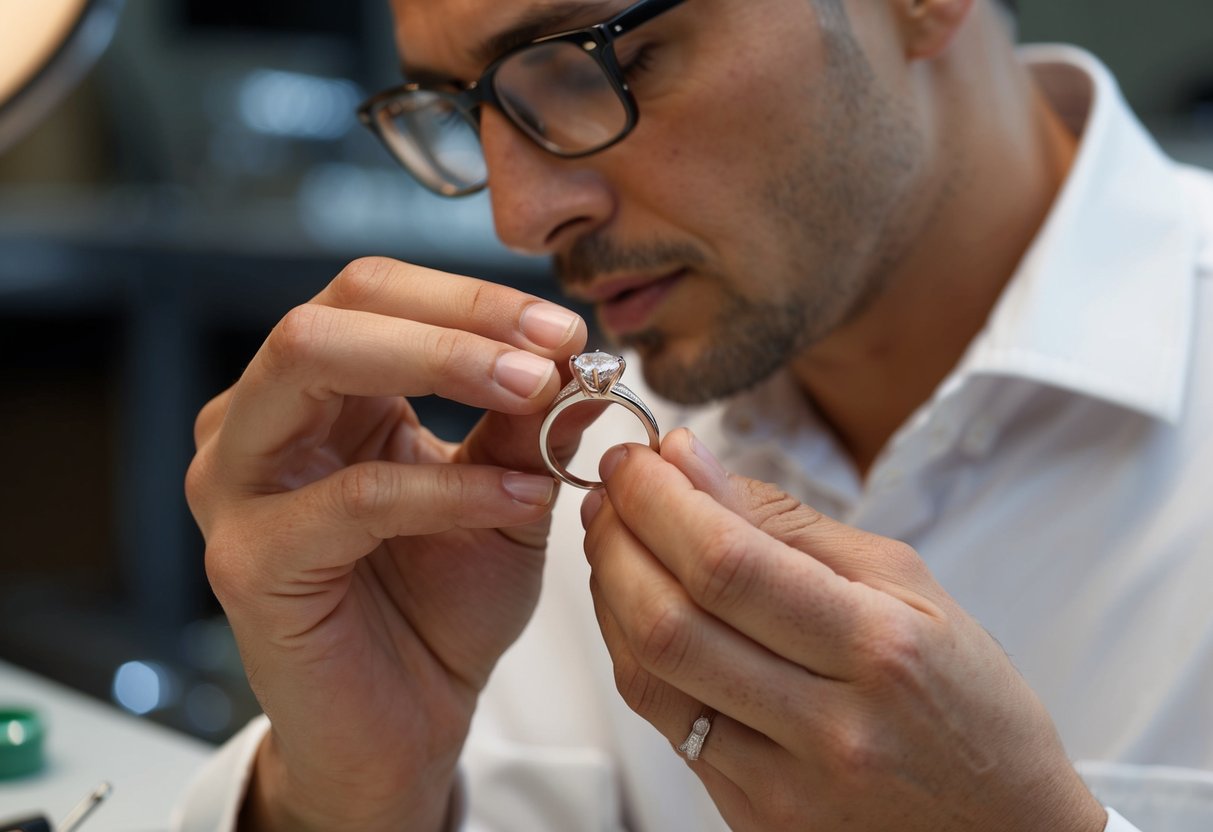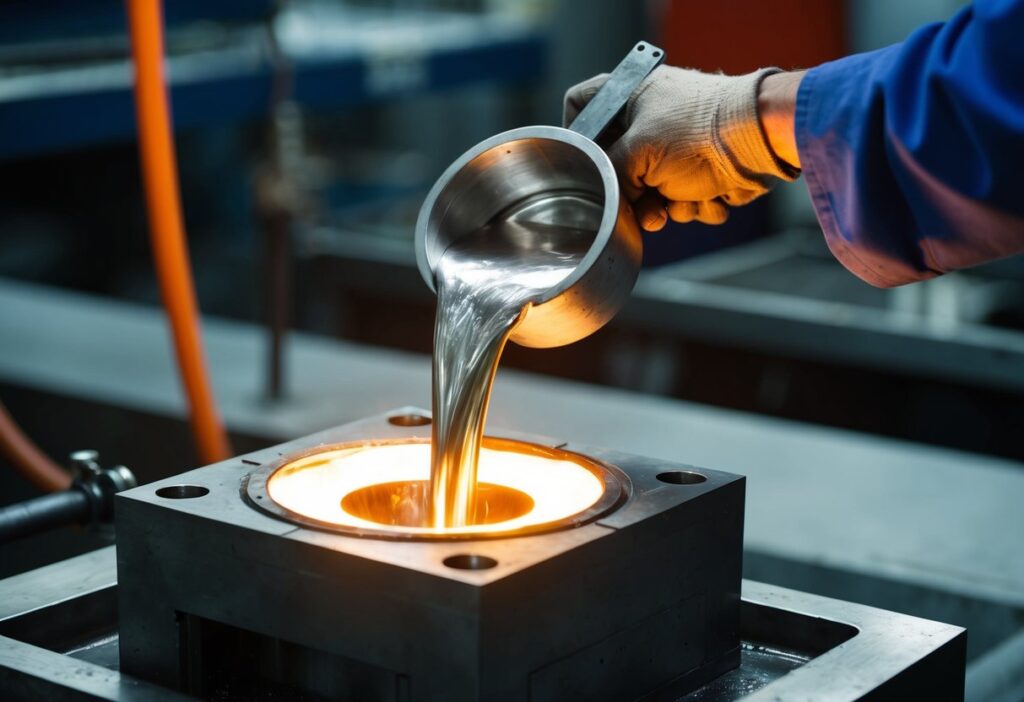Platinum is a precious metal that captures attention due to its rarity and versatility. This transition metal symbolized as Pt with an atomic number of 78, is renowned for its high melting point and resistance to corrosion, making it invaluable across various industries. Its unique properties allow it to be used in everything from jewelry to catalytic converters and even high-tech devices.
Industries value platinum for its excellent conductivity and ability to withstand extreme conditions. This makes it a staple in automotive applications, where it plays a key role in reducing vehicle emissions. Additionally, platinum’s use in medical and electronic fields highlights its importance as a chemical element that can enhance our daily lives.
Beyond its practical applications, platinum’s noble reputation stems from its beauty and status as a luxury item. Its allure is not only in its functionality but also in its ability to symbolize wealth and prestige. Platinum’s multifaceted uses ensure its place in industrial and personal spaces, keeping demand high despite its rarity.
Key Takeaways
-
- Platinum’s properties make it crucial in various industries.
- It is a rare and valuable noble metal with unique applications.
- Its uses range from luxury items to vital industrial components.
Download our Free “Financial Crisis Survival Guide” PDF.
Properties of Platinum

Platinum is a heavy, silver-white metal known for its durability and resistance to corrosion. Its unique characteristics make it a key material in various industries, valued for its strength and stability in challenging environments.
Physical Characteristics
Platinum is a dense and heavy metal, contributing to its high value as a precious metal. It is malleable and ductile, allowing it to be shaped into thin wires and sheets without breaking. This makes it ideal for applications like jewelry and laboratory equipment. The metal is notable for its striking silver-white appearance, which does not tarnish or fade. Platinum also has a high melting point, which means it can withstand extreme temperatures without losing structural integrity. These physical traits make platinum suitable for a wide range of demanding uses.
Chemical Properties
As a noble metal, platinum exhibits remarkable resistance to corrosion and chemical attack. This property is fundamental in industries where the metal is exposed to harsh conditions. Unlike many other metals, platinum does not react with oxygen in the air, so it does not rust. Its stability allows it to be used in environments where durability and longevity are necessary. Additionally, platinum catalyzes chemical reactions like those in vehicle exhaust systems and industrial processes. Its ability to accelerate chemical reactions without being consumed is critical in its widespread application across various sectors.
Platinum in Industry

Platinum plays a crucial role in various industrial applications. It is used in automotive parts, electronic devices, jewelry manufacture, catalytic converters, and medical equipment, showcasing its versatility.
Automotive Applications
Platinum is essential for making catalytic converters in the automotive sector. These devices reduce harmful emissions from vehicle exhaust systems, contributing to cleaner air. Platinum is a crucial catalyst, enabling chemical reactions that transform pollutants into less harmful gases.
Beyond reducing emissions, platinum is also used in spark plugs to enhance engine performance and fuel efficiency. Its ability to withstand high temperatures makes it ideal for these applications, supporting the automotive industry’s efforts to develop more sustainable and efficient vehicles.
Electronic Components
Platinum is used extensively in the electronics industry, particularly in creating parts that require high durability and conductivity. It is also employed in the production of computer hard disks, where its properties ensure reliable data storage.
This metal’s excellent electrical conductivity is also exploited in electrical contacts and connectors, which are vital components for electronic devices. As technology evolves, platinum remains a staple in manufacturing advanced electronics, helping to maintain their performance and reliability.
Jewelry and Investment
This rare and valuable metal is highly sought after for making jewelry. Platinum’s silvery appearance and resistance to tarnish make it an attractive choice for rings, necklaces, and bracelets. Its strength ensures that delicate designs maintain beauty and resist wear over time.
Beyond adornment, platinum is an investment commodity, much like gold and silver. Due to its inherent value and industrial demand, investors see it as a hedge against inflation and economic instability.
Catalytic Uses
Platinum serves as an effective catalyst in various industrial processes. It is used in the chemical industry to produce petrochemical feedstocks and other important compounds. This metal’s versatility enhances the efficiency and output of chemical manufacturing.
Platinum catalysts are also essential for fuel cells, which generate electricity through chemical reactions. These applications highlight platinum’s role in supporting sustainable technologies and renewable energy solutions.
Medical Applications
In the medical field, platinum is utilized for its properties that benefit treatments and equipment. It is the primary component in certain cancer drugs, where it aids in effectively targeting and destroying cancerous cells.
Due to its biocompatibility and non-reactivity, platinum is also used in medical devices like pacemakers and implants. These characteristics ensure patient safety and longevity of the devices, making platinum invaluable in healthcare advancements.
Mining and Refining of Platinum

Platinum is a precious metal that undergoes a challenging mining and refining process. The extraction involves various chemicals and techniques to achieve purity, and global production mainly comes from South Africa, Russia, and other countries.
Platinum Mining Processes
Platinum is usually mined alongside other platinum group metals such as palladium and rhodium. The mining often takes place in countries like South Africa and Russia. Here, deposits are found beneath the Earth’s surface, requiring both open-pit and underground mining methods.
Companies like Rustenburg Platinum Mines have played a significant role in South Africa, one of the world’s largest platinum producers. The initial step involves crushing ore to expose metallic minerals. A common mineral found is sperrylite, a platinum arsenide, which indicates the presence of the metal.
The ore then undergoes milling and concentration processes. This includes froth flotation, where crushed ore is mixed with water and chemicals to make the platinum particles float. This concentrated ore is then further processed for refining.
Refining and Extraction Techniques
Once mined, platinum must be refined to achieve high purity levels. This involves several chemical treatments to separate platinum from other materials. Important chemicals in this process include sulfuric acid, chlorine, and aqua regia—a mixture of hydrochloric and nitric acids.
The refining phase usually starts with smelting, where the concentrated ore is heated at high temperatures. This step produces a platinum-rich material, which is then subjected to chemical treatments to separate impurities and other metals. Advanced machinery plays a crucial role in ensuring accurate and efficient refining.
After refining, pure platinum is produced, often formed into platinum ingots. These ingots are used in industries like jewelry and electronics. Key platinum-producing regions include South Africa, Russia, and Canada, all contributing to the global supply chain.
Platinum in Chemistry

Due to its properties, platinum is a key player in various chemical processes. It catalyzes numerous reactions and is integral to forming many important chemical compounds.
Roles in Chemical Reactions
Platinum is highly valued for its role as a catalyst in the chemical industry. In catalytic converters, platinum helps reduce harmful vehicle emissions by converting toxic gases into less harmful substances. It is also used as a catalyst in producing chemicals like silicone, benzene, and nitric acid.
In laboratories, platinum stands out because of its durability and resistance to corrosion, which is why it is used in reactions involving aqua regia, a mixture of hydrochloric and nitric acids. Its ability to withstand such aggressive chemical environments makes it indispensable in various industrial reactions.
Platinum Compounds and Isotopes
Platinum forms various important compounds, some of which are used in medicine. For instance, compounds like cisplatin, carboplatin, and oxaliplatin are crucial in cancer treatment because they effectively target rapidly dividing cells.
In addition to its compounds, platinum also has several isotopes. Though all are stable, platinum-195 is the most abundant and often used in scientific studies. These isotopes contribute to the detailed analysis of chemical processes, enhancing the understanding of reaction mechanisms.
Platinum’s unique properties and versatility make it vital in chemical reactions and compound formations.
Economic and Environmental Factors

Platinum is a vital metal in economic markets and environmental applications. Its unique properties make it highly valuable for investment and industrial uses. Furthermore, its ecological benefits are notable, particularly in pollution reduction and sustainability practices.
Market and Trade
Platinum is crucial in global markets due to its rarity and multiple industrial uses. Platinum investment often fluctuates with economic conditions. It is considered an expensive asset similar to gold, and its price can be influenced by speculation and demand.
Platinum is often a byproduct of nickel and copper mining, impacting its supply. The markets are sensitive to geopolitical tensions and shifts in major industries like the automotive sector. When used in catalytic converters, the demand for platinum can rise with stricter emission standards. This causes its value to shift based on market trends and regulatory changes.
Environmental Impact
In terms of environmental benefits, platinum plays a significant role in reducing harmful emissions. It is widely used in catalytic converters, which help lower vehicle emissions. This has a positive effect on air quality and follows tightening environmental regulations.
Recycling of platinum is also essential. As an expensive metal, recycling helps reduce mining demands and lessens environmental impact. Recycling programs ensure the metal is reused in various industries, promoting sustainability. Efforts to enhance the recycling process continue to grow, addressing environmental concerns linked to mining and producing new platinum.
Frequently Asked Questions

Platinum serves diverse roles in various industries, from its use in cars and jewelry to essential functions in electronics and medical devices. Its unique properties make it valuable in both industrial and consumer products.
What are the primary industrial applications of platinum?
Platinum is vital in several industries, particularly for its catalytic properties. It is widely used in automobile catalytic converters to reduce harmful emissions. Additionally, platinum is essential in refining and chemical production, acting as a catalyst to facilitate reactions.
How does platinum contribute to automotive technology?
In the automotive sector, platinum is crucial for reducing vehicle emissions. It is an essential component of catalytic converters, which convert toxic gases into less harmful ones. This property helps to meet environmental regulations, making vehicles more eco-friendly and improving air quality.
In what ways is platinum used in jewelry and ornamentation?
Platinum is highly prized in the jewelry industry due to its durability and attractive appearance. It maintains its luster over time and resists tarnish, making it an ideal choice for fine jewelry such as rings, necklaces, and bracelets. Its hypoallergenic nature also adds to its appeal for personal adornment.
What are the technological uses of platinum in electronics and computers?
Platinum’s stable and conductive properties make it valuable in electronics. It is used in hard disks and thermocouples, which measure temperature accurately. In computers, platinum helps improve efficiency and reliability by maintaining stable connections in electronic devices.
Can you list some of the everyday products that contain platinum?
Platinum is found in numerous everyday products like personal care items, which include shampoos and lipstick. It’s also used in silicone materials for its purity and safety, especially in products that come into contact with skin, providing functionality and safety.
How does the demand for platinum in medical devices and equipment manifest?
Platinum’s nonreactive and durable properties are crucial in the medical field. It is used in medical equipment such as pacemakers and catheters. Its biocompatibility ensures the body does not reject these devices, making it invaluable in life-saving and health-monitoring technologies.








